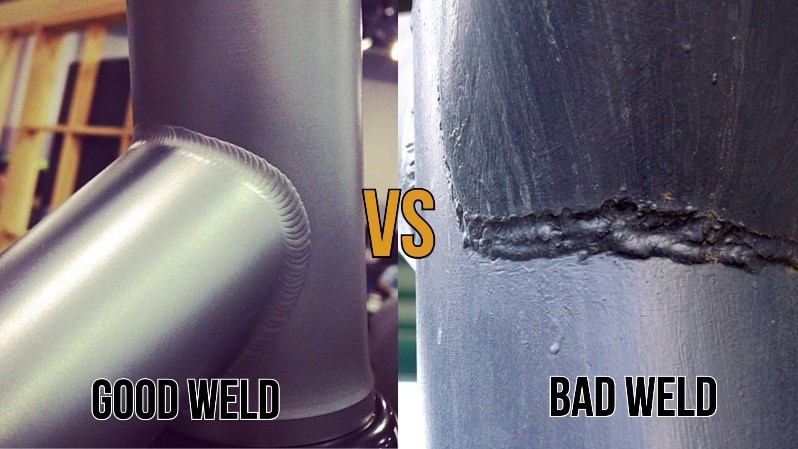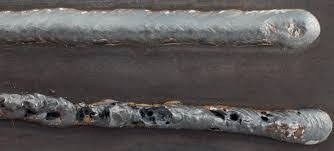Properly maintaining and operating equipment produces a quality product, but also prevents costly mistakes and headaches down the road. Having to repair and rework poor welds will eat away at your bottom line. In this article, we’ll go over some common welding mistakes and how to avoid them.
Incorrect Machine Settings
If your machine isn’t set up properly, you’re not likely to be happy with the results. Your weld and final product could have defects. Correct temperature and wire speed are crucial for a proper weld. A great way to dial in your settings is to run a few test welds on some scrap metal.
Remember that wire speed controls amperage. If your wire speed is too high, you could burn through your work piece or cause excessive spatter. If your wire speed is too low, your weld may not hold due to lack of fusion and will suffer from cold cracking.
Check to see what your parameters should be given the diameter of wire you’re using and the thickness of the metal. You’ll be able to tell you’re dialed in correctly when you hear the smooth crackling from your welder—it sounds like bacon frying!
Welding tip! Weld from the inside to the outside. This pushes the stresses away from the weld.
Insufficient Gas Flow
Shielding gas protects the weld from oxygen, nitrogen, and hydrogen, which are in the earth’s atmosphere. If not controlled, these elements can cause porosity (holes) in the weld. If your gas mixture or flow is off, it will negatively affect the quality of the weld.
CO2 gas has good penetration on steel, but can be too hot for thin metals. Thus, a mixture of CO2 and Argon leaves less spatter and a better bead appearance. For example, 75% Argon/25% CO2 is an ideal mixture to provide protection for a weld on mild steel. There are several factors that go into determining the flow rate— nozzle size, joint configuration, and any uncontrollable factors (e.g. open bay weld shop with excessive wind).
As you can see from the picture to the right, improper gas flow can severely damage a weld.
Preventative Maintenance
Though this seems fundamental, it is commonly overlooked. Every welding shop should have a regular maintenance schedule to inspect and repair equipment. This is one of the best ways to prevent unnecessary issues arising in the future.
- Check all gas hoses, wire feeders, and power chords for wear and tear. Any small punctures or tears could cause additional damage should they worsen.
- Inspect all guns and torches for any damage or corrosion that has built up over time. Even a slight blockage can lead to problems with maintaining a strong arc and causing poor quality welds.
- Gently blow the inside of your welder with an air source every six months. Over time, dirt can build up and get into places it shouldn’t be, causing defects in the machine. You should also clean the drive rolls and wire feeder with a wire brush.
- Create a maintenance schedule to help keep you accountable. This will not only ensure your equipment is in top shape, it will benefit safety, quality, and ultimately your ROI.
For additional guidance, reach out to our team at Welders Supply!




